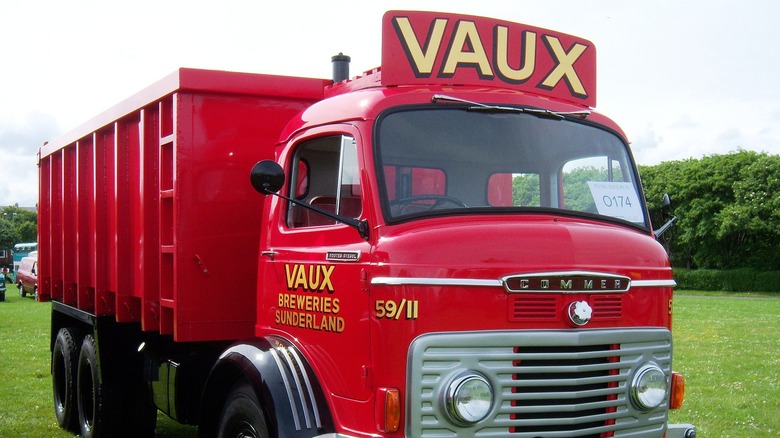Why The Commer Knocker Might Be The Strangest Engine Ever Built
Motor vehicle engine design has remained fairly standard throughout the history of the technology, although things have evolved quite a bit from the T-4 engine that powered Henry Ford's pioneering Model T. Since the automobile became a common fixture in the early 20th century, the engines in most vehicles have featured a single piston per cylinder attached to a crankshaft via connecting rods. Mazda's 13B rotary engine was one deviation from this standard. Still, the overwhelming majority of cars and trucks manufactured in the last 100-plus years have adhered to the standard single piston per cylinder design.
One notable exception was the TS3, a supercharged three-cylinder, two-stroke diesel engine used by the British commercial truck manufacturer Commer in the 1950s and '60s. The TS3 was known as the "Commmer Knocker" because of its unique idle sound. The knocker was an opposed-piston engine, with two pistons in each cylinder mounted with the heads of the pistons facing each other.
The Knocker had some other design quirks
The opposed-piston concept is hardly revolutionary; the Fairbanks-Morse 38 1/8 has been powering marine vessels since World War II. French engineer Eugene Brillié was designing opposed-piston engines as early as the 1920s. The DS3 engine that Commer utilized was built by the Rootes group, which owned the Hillman and Humber brands and, at times, built bodies for Rolls-Royce and Daimler, among others.
The Commer Knocker differed from other opposed-piston engines in that it had one crankshaft instead of two. In the TS3, one piston is designated as the exhaust piston, and the other serves as the air intake piston. The exhaust piston had a much shorter travel distance to make sure its port was sealed when air was being pulled into the cylinder. This quirk set the TS3 apart from other opposed-piston engines, along with the large lobe-shaped blower that captured exhaust gases and forced them back through the intake manifold.
The design was remarkably powerful for its size: the original 3.25 liter TS3 put out 105 horsepower and 270 lb-ft of torque, and a 1964 upgrade boosted those figures to 117 hp and 310 lb-ft.
The TS3 remained in production until 1972, when the four-cylinder TS4 replaced it. By then, Chrysler's gradual acquisition of the Rootes group had already begun, spelling the end for the Commer Knocker.
